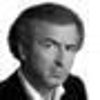Over the summer I had a chance to reread Picasso's Mask by Malraux ("La Tête d'obsidienne," 1974).
And in this late text, in those pages that one feels are haunted, like Hôtes de Passage and Lazarus, by approaching death, I read the last four chapters, in which he discusses his great "Museum Without Walls" exhibition, which opened in July 1973 at the Fondation Maeght in Saint-Paul-de-Vence.
Had I in fact read those pages before?
Now I'm not quite sure.
What I am sure of is my recollection of Malraux's conversations with Picasso, recounted in the book, of his account of visits to the artist's studios in the Rue des Grands-Augustins in Paris, the Californie neighborhood of Cannes, the Château de Vauvenargues, and Notre-Dame-de-Vie in Mougins -- but not the part about the Fondation Maeght and those splendid 150 pages devoted to what I now understand was the last great adventure of the author of Man's Fate and Man's Hope.
We rediscover in those pages the Fondation Maeght much as it is today, seemingly unchanged in 40 years: the gardens; the whirring of the cicadas and the concerts of frogs; the quivering silhouettes of the holm oaks; Virgil's olive trees against the backdrop of the Homeric Mediterranean; the mosaics of the Braque basin; the Giacomettis that keep vigil over the courtyard of the same name and that tremble, it is said, when night falls; the seven or eight galleries, just as they are today, which I recognize without any need for names.
We see the works of art as they are unpacked among the Mirós and their "ingenuous hell," as those works commence, before the eyes of the writer-curator (who arranges them as one might tarot cards, unexpectedly, improbably, and very quickly), the most fertile of dialogues: with the first visitors? with the need to believe of those who no longer believe? with those who will come later, those not yet born, those for whom, as Baudelaire said, a poem (in words or paint, it hardly matters) waits eternally in silence? Or is the dialogue with the other works, those siblings in the order of the Invisible that will be, for the several months of the exhibition, the agents of their resurrection?
We see the works being hung, witness that miraculous moment when pictures appear, as Picasso told Malraux, "draped in golden robes." The miracle of the frame that makes its space, and not the other way around. That of the sculptor from the Cyclades whose work, juxtaposed with a monochrome painting that did not complement it, almost loses its radiance, and, by contrast, the Buddha with closed eyes transfigured by the proximity of a Byzantine Christ Pantocrator that endows it with a new grace. We witness the complete absence of Monets, which, like the absence of flowers for Mallarmé, accentuates the sense and brilliance of a Van Gogh, Cézanne, or Corot. We hear the devils of Picasso conversing with the angels of Chagall and reconciling, behind their backs, two artists who disliked each other.
At the opening dinner, we watch the ballet of those who had lent paintings, the friends of the gallery, conservators and critics, curators responsible for accompanying this Shigemori or that Titian that had never before left its home museum; we listen to the merry din in a restaurant in Mougins where essayist Roger Caillois rubs elbows with Chagall, writer Louis Guilloux with Maillol and Bonnard's muse Dina Vierny, a restaurant that I cannot place (perhaps because it is no longer there); we hear the speech by Aimé Maeght, father of Adrien, the Fondation Maeght's current president; and, finally, we hear Malraux's own speech, with its somersaults and stampedes, its short-circuits through the centuries, watch Spengler going hand-to-hand with Elie Faure, experience the enigma of the resurrection of the pictures in their glorious flesh, and appreciate the great lucidity of artists who know that works of art are like gods -- capable of metamorphosis.
And then the last day, we anticipate the sadness at the thought of the moment when the Sumerian statues will have to go back to Syria; when Manet's "Berthe Morisot" will be separated from the great "Forêt vierge" of Le Douanier Rousseau, next to which it would have liked to stay a little while longer; when the Picassos will have to be returned to Jacqueline, who lent them in memory of the red colonel of the Spanish civil war. And then the time comes for the great dispersion, when the museum without walls will be consigned to the cemetery for dreams that suddenly seem like mirages, calling forth the pages of Picasso's Mask to prove that those dreams had, at least for a season, the power to become incarnate.
It's all there.
An existence in its unity.
The joyful torment of a writer struggling, as always, with his dreams and with the world that resists them.
And, for me, who began my adult life, more than 40 years ago, answering the call of that very same writer, who himself had answered the call of a tortured people in the Ganges delta, nothing is more moving than to rediscover Malraux here, in these pages that I had forgotten, aged but valiant, unsteady between sentences but always finding the right cadence and uttering, from that place that was already "the only French foundation comparable to the great foreign -- and particularly American -- foundations," the only phrase with the power to refute Stalin's terrible quip that "death always wins," related to Malraux by General de Gaulle and by him to us in turn -- but this time, there in the gardens of Saint-Paul de Vence, in defiance and scorn.
Translated by Steven B. Kennedy
